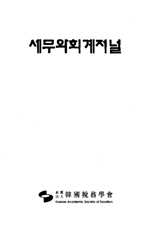- 영문명
- Incremental Tax Avoidance and Tax Risk
- 발행기관
- 한국세무학회
- 저자명
- 박시훈(Si-Hun Park) 김갑순(Kap-Soon Kim)
- 간행물 정보
- 『세무와회계저널』제20권 제6호, 191~218쪽, 전체 28쪽
- 주제분류
- 경제경영 > 회계학
- 파일형태
- 발행일자
- 2019.12.30
6,160원
구매일시로부터 72시간 이내에 다운로드 가능합니다.
이 학술논문 정보는 (주)교보문고와 각 발행기관 사이에 저작물 이용 계약이 체결된 것으로, 교보문고를 통해 제공되고 있습니다.

국문 초록
본 연구는 증분조세회피와 세무위험과의 관련성을 분석한 연구이다. 조세회피에 관한 선행연구에서는 조세회피와 세무위험의 관련성에 대하여, 높은 조세회피수준이 세무위험을 증가시킬 것으로 보았다. 그러나 최근 조세회피와 세무위험의 관계를 실증분석한 선행연구들은 조세회피와 세무위험의 측정방법에 따라 다른 결과를 보고하였다. 본 연구에서는 기존연구의 문제점을 개선하기 위해 조세회피를 새롭게 정의하고 측정하였다. 기존연구와 같이 조세회피의 측정치로 유효세율(ETR)을 사용할 경우 기업 및 산업별로 나타나는 지속적인 세금감면혜택으로 낮은 수준을 유지하는 경우와 조세회피로 낮은 수준을 유지하는 경우를 구분하지 못할 수 있다. 또한 장기ETR은 변수에 지속성이 반영되어 있으므로 ETR의 지속성 또는 변동성과의 관계를 연구 시 해석상의 오류가 발생할 수 있다.
본 연구에서는 증분조세회피 즉 ETR의 수준이 아닌 일정 기간 ETR의 감소분을 조세회피의 측정치로 사용하여 측정한 증분조세회피가 세무위험에 미치는 영향을 분석하였다. 조세회피는 ETR의 감소에 영향을 미치는 행위이므로 과거 기간보다 낮아진 ETR은 조세회피와 관련성을 갖는다. 증분조세회피는 그 값의 크기가 조세회피의 크기를 반영할 수 있도록 과거 t-n기의 유효세율에서 t기의 유효세율을 뺀 값을 사용하였고, 음수 값은 표본에서 제외하였다. 세무위험은 t+1기~t+5기의 총 5년간의 Cash ETR 또는 GAAP ETR의 표준편차로 측정하였다. 표본은 2003년부터 2013년까지의 유가증권과 코스닥시장 상장기업 중 비금융업을 대상으로 하였다.
실증결과 증분조세회피와 세무위험과의 관련성은 Cash ETR과 GAAP ETR 모두 통계적으로 유의한 양(+)의 값으로 나타났다. 이러한 결과는 증분조세회피가 커질수록 조세회피의 변동성도 증가하는 것을 의미하는 것으로, 과거의 조세회피 증가와 미래의 세무위험 증가가 관련성을 갖는다는 연구가설을 기존연구와 달리 증분조세회피의 개념을 이용하여 실증하였다는데 연구의 의의가 있다.
영문 초록
This study investigated the relationship between incremental tax avoidance and tax risk. Prior studies have expected that higher tax avoidance facilitates tax risk; however, the need arises to reconsider how tax avoidance should be measured as the results of previous studies have depended on the way they measured tax avoidance. Tax avoidance is commonly measured based on the consistently low level of the effective tax rate (ETR). However, specific companies or industries can show consistently low ETR because of consistent tax cut policy from the government. Since Long-term ETR reflects persistence in the ETR or offsets any volatility during the period in the ETR, a problem arises when interpreting the relationship between Long-term ETR and persistence or volatility of ETR.
To solve such problems, we present the possibility of a new measure, incremental tax avoidance. Because tax avoidance is an action to reduce ETR, a decrease in ETR compared to the company’s previous periods may capture management intentions. We derived incremental tax avoidance by subtracting ETRt from ETRt-1, to ensure that the value reflects the size of tax avoidance. Because negative value means no tax avoidance, we excluded samples with negative values from our data. Tax risk is the standard deviation of Cash ETR or GAAP ETR during t+1~t+5. Data consists of KOSPI and KOSDAQ non-financial companies from 2003 to 2013.
Our test results show a statistically significant positive effect of incremental tax avoidance on both tax risk measures based on Cash ETR and GAAP ETR. This study contributes to the literature in that it suggests and confirms the applicability of a new tax avoidance measure, which mitigates the problem of current tax avoidance measures.
목차
Ⅰ. 서 론
Ⅱ. 이론적 배경 및 선행연구
Ⅲ. 연구가설 및 연구방법
Ⅳ. 실증분석결과
Ⅴ. 요약 및 결론
참고문헌
해당간행물 수록 논문
참고문헌
관련논문
최근 이용한 논문
교보eBook 첫 방문을 환영 합니다!

신규가입 혜택 지급이 완료 되었습니다.
바로 사용 가능한 교보e캐시 1,000원 (유효기간 7일)
지금 바로 교보eBook의 다양한 콘텐츠를 이용해 보세요!



